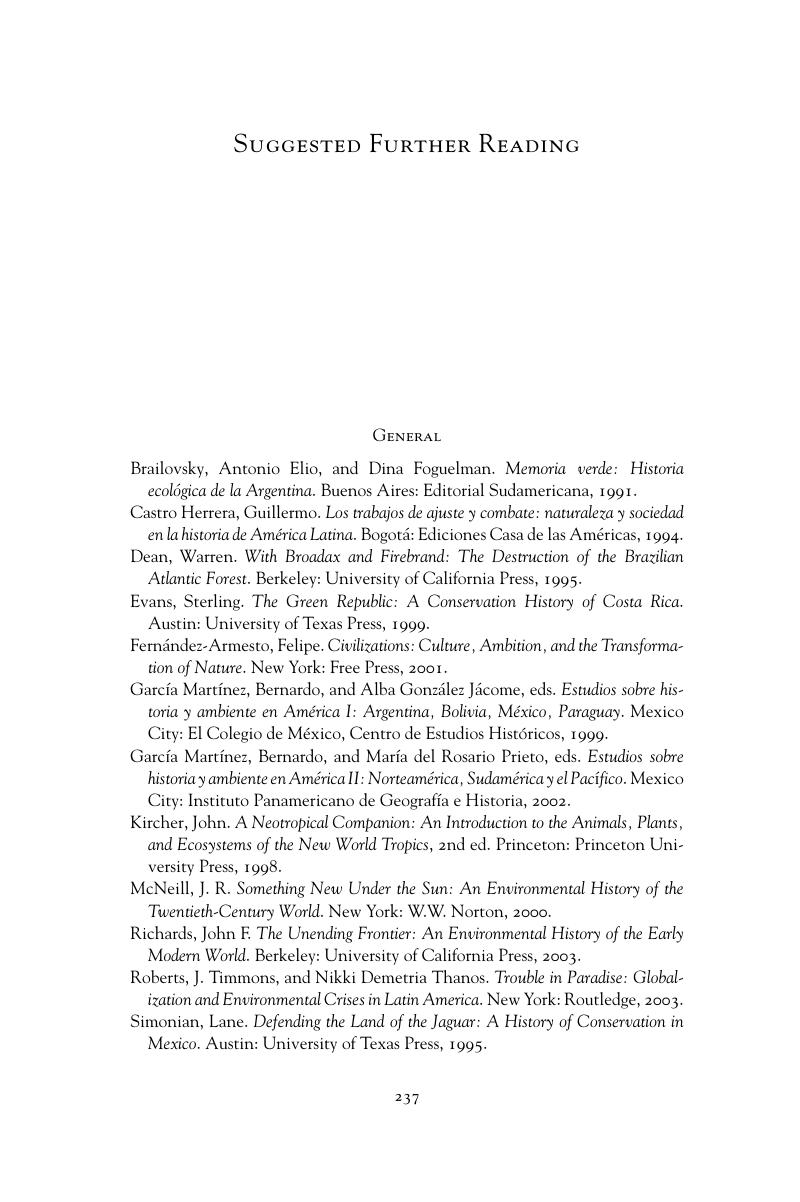Book contents
- Frontmatter
- Contents
- List of illustrations
- Acknowledgments
- Map 1 Middle America
- Map 2 South America
- Introduction: Props and Scenery
- 1 An Old World Before It Was “New”
- 2 Nature's Conquests
- 3 The Colonial Balance Sheet
- 4 Tropical Determinism
- 5 Human Determination
- 6 Asphyxiated Habitats
- 7 Developing Environmentalism
- Epilogue: Cuba's Latest Revolution
- Suggested Further Reading
- Index
- References
Suggested Further Reading
Published online by Cambridge University Press: 05 February 2015
- Frontmatter
- Contents
- List of illustrations
- Acknowledgments
- Map 1 Middle America
- Map 2 South America
- Introduction: Props and Scenery
- 1 An Old World Before It Was “New”
- 2 Nature's Conquests
- 3 The Colonial Balance Sheet
- 4 Tropical Determinism
- 5 Human Determination
- 6 Asphyxiated Habitats
- 7 Developing Environmentalism
- Epilogue: Cuba's Latest Revolution
- Suggested Further Reading
- Index
- References
Summary

- Type
- Chapter
- Information
- An Environmental History of Latin America , pp. 237 - 248Publisher: Cambridge University PressPrint publication year: 2007

